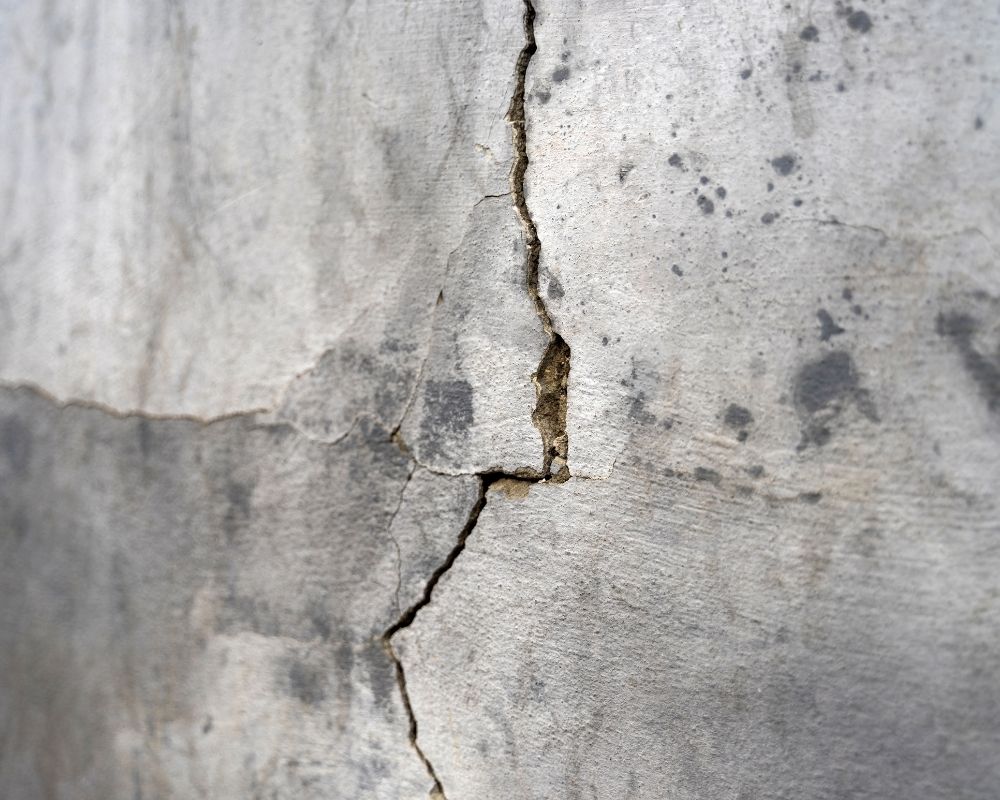Vertical and horizontal foundation wall cracks are the most common structural problems with house foundations overall. When you see a crack, it’s a bad sign about the structural stability of your home and could indicate that there are deeper problems with the foundation.
Both vertical and horizontal foundation cracks are caused by drainage problems, moving soil, or expanding clay soil. Today, let’s break down how you can handle vertical and horizontal foundation wall cracks and what each may mean for future repair needs.
Vertical Foundation Wall Cracks
Vertical foundation wall cracks, which sometimes manifest as diagonal foundation wall cracks, run up and down rather than from side to side. These cracks are also called shrinkage cracks because their most common cause is shrinking concrete.
Generally, vertical foundation wall cracks won’t appear larger than 1/8 of an inch wide. They typically appear in the middle of your home’s walls or concrete foundation blocks. If you see a vertical foundation wall crack, your best bet is to simply fill the crack yourself with cement or caulking material.
However, if a vertical foundation wall crack is larger than 1/8 of an inch wide, you may need to contact a professional. Furthermore, many vertical wall cracks together could indicate broader structural problems that need wall crack repair specialists.
Horizontal Foundation Wall Cracks
Horizontal foundation wall cracks are the opposite of vertical cracks – they run across your foundation or your home’s walls from side to side. These are typically much more serious and could indicate that your foundation’s broader integrity is at risk.
The majority of horizontal wall cracks are caused due to excess water pressure pushing on the foundation walls from the outside. However, other root causes, like soil movement, can cause horizontal cracks or impact foundation integrity.
Of all horizontal cracks, the most serious is a crack in your foundation slab. These can gradually expand and fully compromise the integrity of a concrete slab, leading to a foundation collapse or home collapse. If you see a horizontal foundation crack of any type or size, you should contact professionals right away.
When to Call Professionals
It’s never a bad idea to contact foundation repair specialists like KC Pier. Professional foundation repair experts know exactly what to look for when they examine cracks in your home’s foundation or walls and can accurately determine when the issue needs pressing attention.
How to Tell if a Crack Doesn’t Need Repair
However, some cracks don’t always need professional repair services. Generally, if you can fit a dime into a foundation crack, it needs professional repair help. If a dime can’t fit into a crack, it doesn’t need help right away, or you may be able to treat the issue with at-home cement filling.
Note that this rule doesn’t apply if your foundation is affected by dozens of cracks. If your foundation has lots of cracks, they can gradually expand to one another, rapidly growing in size and width. This can quickly compromise your house’s foundation and lead to major problems.
Contact Kansas City Foundation Repair Specialists
At the end of the day, the best way to handle vertical and horizontal foundation wall cracks is to contact KC Pier. As regional experts for Kansas City foundation repair and restructuring support, we’re well equipped and ready to help you tackle any number of cracks in your home’s foundations and walls. We can provide a free consultation and estimate for the cost of the repair, plus help you determine the best way to prevent the cracks from returning in the future.
Contact us today to handle your home’s vertical and horizontal foundation needs!

